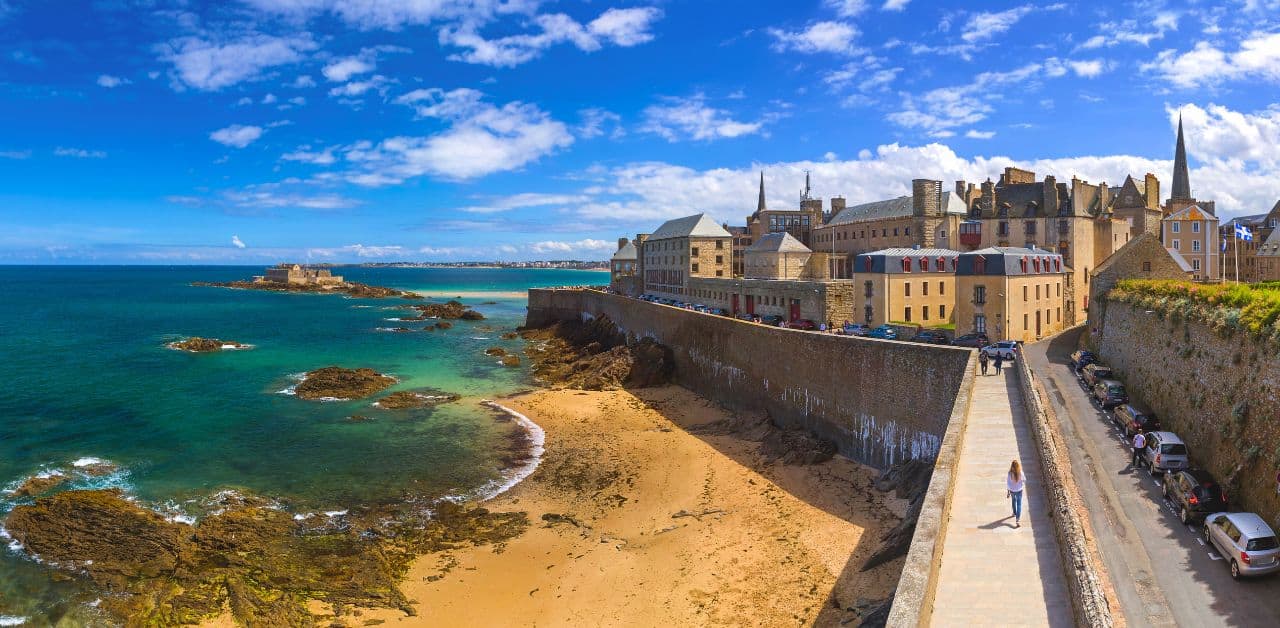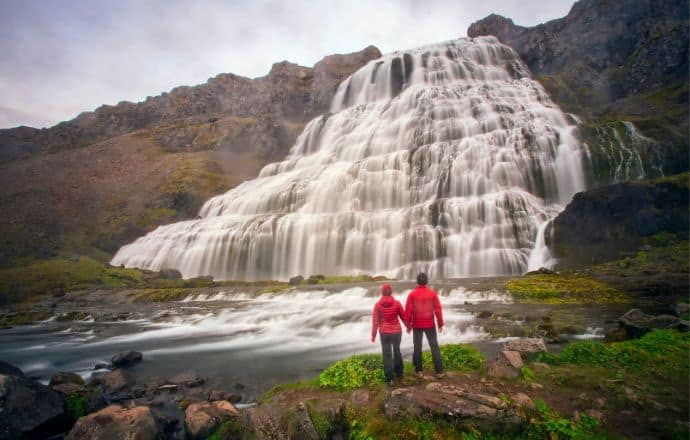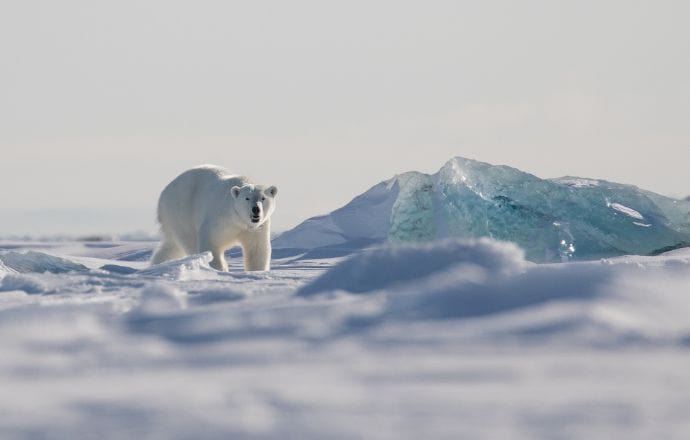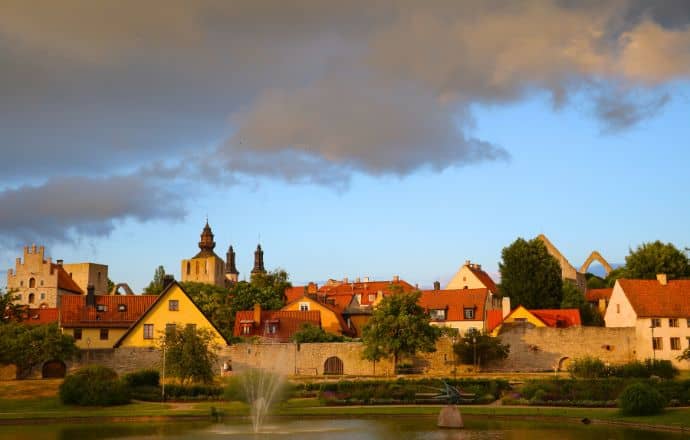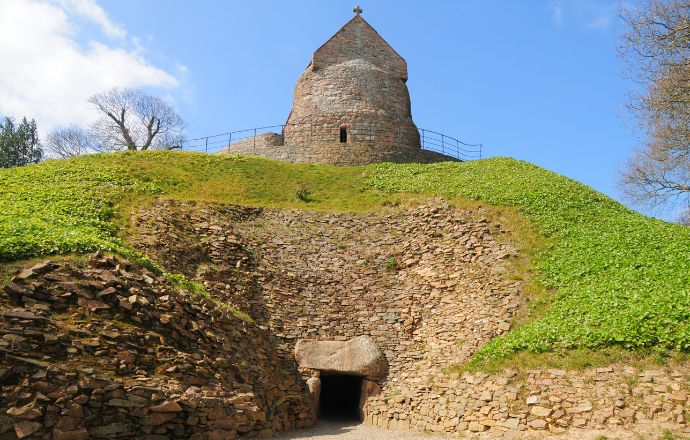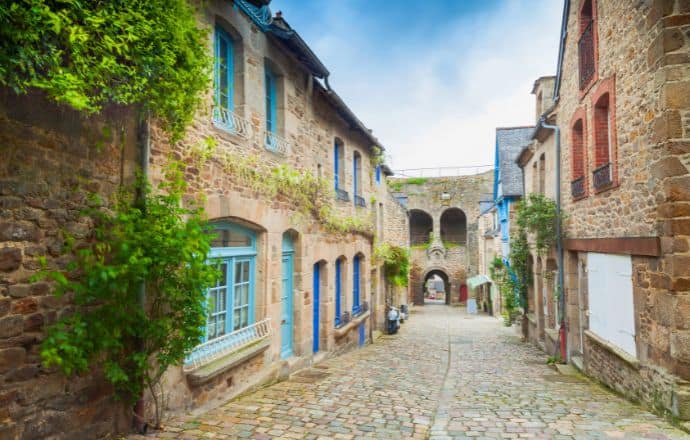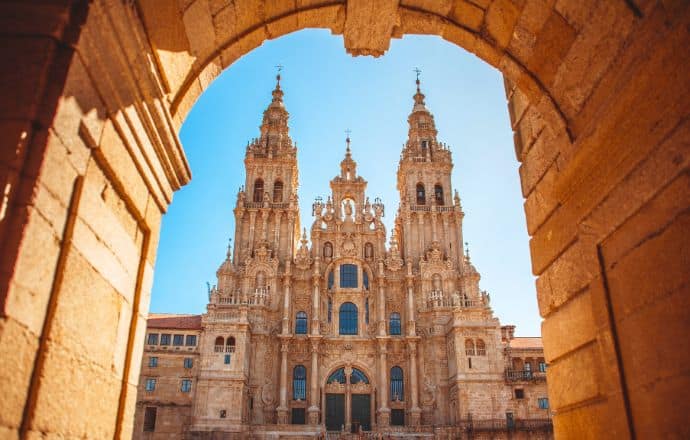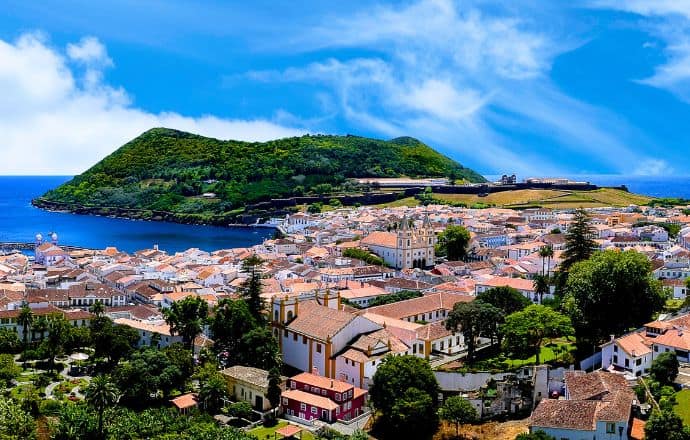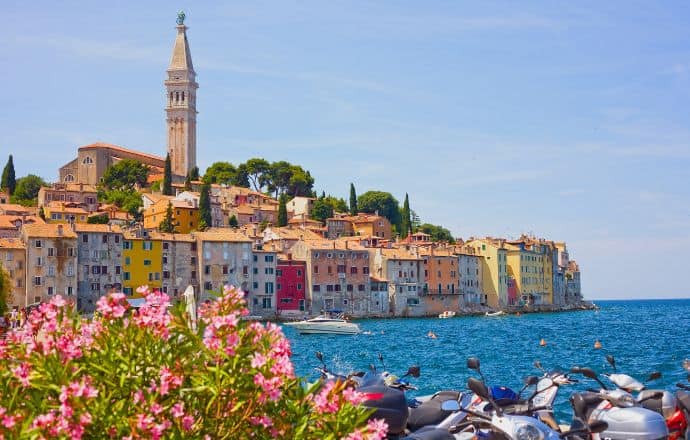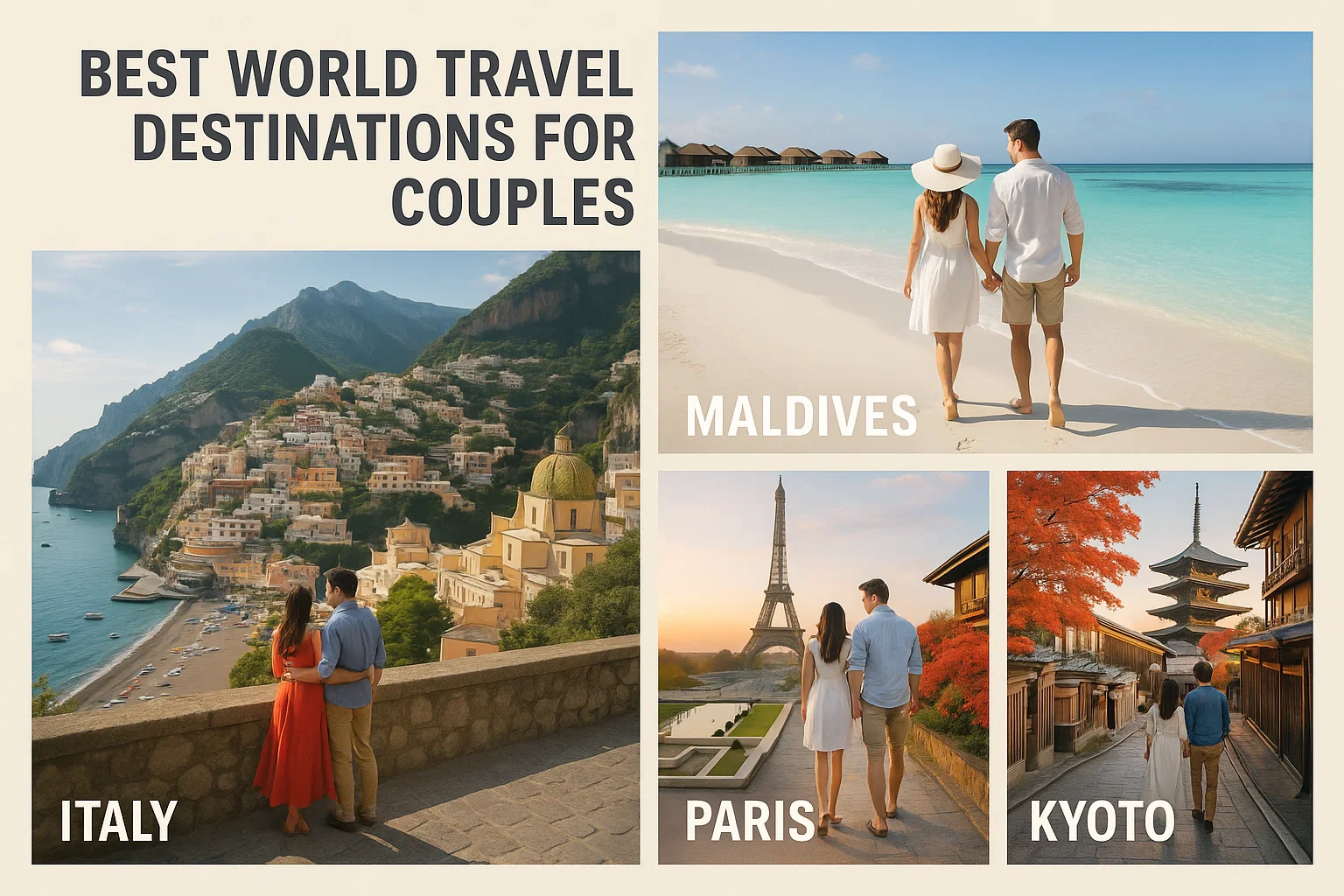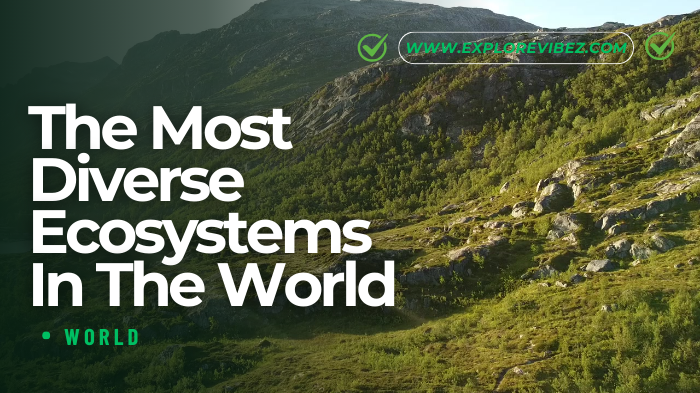Original content owned & copyrighted by Untried Global Travel. In recent years, summer in Europe has brought the increasingly negative impacts of mass tourism, but there are still subconscious gems in Europe. Off the tamed path Europe cities, islands, and regions do exist without crowds.
Every peak European travel season seems to bring increasingly unfortunate issues, increasing the rift between locals and visitors and prompting calls to prorogue tourist numbers.
Overtourism has long-lasting consequences, increasing the property and rental prices, driving locals yonder from their hometowns, and turning historic centers into living museums.
In the process, the cultural heart of these destinations all too often seems to get lost.
If your dream European vacation includes sailing the canals of Venice or wandering the streets of Florence in solitude, you’ll likely find the reality pales in comparison to the fantasy.
Best Subconscious Gems in Europe Guide
1. Greenland
There are approximately 90,000 yearly visitors to Greenland– a far cry from the 20 million tourists who travel to Venice every year.
Considering the fact that Greenland is Europe’s largest island, your chances of stuff stuck in selfie-stick-brandishing crowds there are slim to none. Yet Greenland is a must-visit for lovers of nature and of the Arctic.
It’s worth a visit in winter to wits the Polar darkness, and for the upper likelihood to see Northern Lights in Kangerlussaq (where they towards approximately 300 nights each year).
In summer you can have fun round-the-clock under the midnight sun, enjoying venture activities including kayaking in iceberg-filled lagoons and exploring the Ilulissat Icefjor, a UNESCO World Heritage Site (and one of the world’s few growing glaciers).
Greenland is moreover unique in Europe considering it’s the only place where you can learn well-nigh Inuit culture.
Qaanaaq, formerly known as Thule, is an Inuit town located at 77.4° north, making it one of the northernmost inhabited places in the world. It’s home to virtually 700 people, and tourists can learn well-nigh their culture and traditions.
2. Iceland’s Westfjords
Iceland is flipside place that’s often mentioned when talking well-nigh overtourism.
Its problems range from visitors flocking to a pass once featured in a Justin Bieber video to locals enraged without seeing tourists using their gardens and fields as toilets.
Bot most Iceland tourism is well-matured in the southern part of the country, in the vicinity of Reykjavik and the famous “Golden Circle.”
If you want to stave throngs of tourists, throne to the northwestern peninsula known as the Westfjords, which you can visit on small ship cruises.
Reaching the region from the wanted can take tropical to half a day, and the roads to get there aren’t great.
But you’ll be rewarded with roaring Iceland waterfalls like Dynjandi, thousands of Iceland birds such as puffins in Latrabjarg, and free-range Icelandic Horses as well as many incredible natural pools and hot springs.
3. Svalbard (Norway)
Do you have a knack for remote places? No other European subconscious gem will make you finger on the whet of the map quite as much as Svalbard, the Norwegian archipelago that lies halfway between the North Pole and continental Norway.
In summer, Svalbard is full of wildlife. Polar bears outnumber residents two to one, and you may moreover come wideness seals, walruses, whales, tundra foxes, and more.
Nature is Svalbard’s main draw: There are uncounted glaciers, mountains, large expanses of tundra and sea cliffs, which are inhabited by a number of migratory birds.
Yet it’s moreover a place for history lovers, where it’s possible to visit a 17th century whaling station and recently x-rated coal mines, like the Soviet settlement of Pyramiden.
Touring Svalbard on your own can be very dangerous. At these latitudes, nature is very wild and the danger of a polar withstand wade is very real.
But there are trek cruises to Svalbard every summer, with a focus on wildlife and finding polar bears.
4. Gotland (Sweden)
Located in the Swedish part of the Baltic Sea, Gotland was minion by famous mucosa director Ingmar Bergman. He spent the last 40 years of his life in Fårö, a tiny island located just north of Gotland.
It’s a popular destination for vacationing Swedes, but it’s all but unknown among other nationalities.
Gotland is a unconfined place for people who wish to unplug completely, spending days in a secluded motel in the forest and occasionally walking to the waterfront for a refreshing dip in the sea.
Those who want to go sightseeing will moreover find plenty to do in Gotland. Visby, the largest town, is UNESCO-protected considering it’s the best-preserved medieval town in Nordic Europe.
You can moreover visit the unique raukar (limestone sea stacks found on beaches all over the island), see wooden churches and medieval windmills, or plane try to spot the theirs Gotland Pony.
WESTERN EUROPE HIDDEN GEMS
5. Shetland Islands (Scotland)
You’ll find the enchanting Shetland Archipelago on the remote whet of the United Kingdom’s map, 12 hours by ferry from the northern tip of Scotland.
Not many people unflinching the stormy seas to reach this archipelago made up of 100 islands, only 16 of which are inhabited.
Popular sights include St. Ninian’s Isle, where you can visit the largest tombolo (two-sided beach) in the UK; the Sumburgh Lighthouse, with its colonies of migrating birds (including puffins!); and the sea cliffs of Eshaness.
We moreover recommend visiting the ruins of croft houses, where local Shetlanders used to live surpassing famine caused massive migrations in the 19th century.
The remote feeling of stuff “in the middle of nowhere” is one of the main draws that leads intrepid travelers to the Shetland Islands, and you’ll have few others to share this fascinating place with.
6. Jersey (Channel Islands)
The island of Jersey may be teeny in size (just 5 by 9 miles), but it includes a large variety of sights, both natural and historic.
If you’ve planned a short stay in the Channel Islands, you may quickly find yourself planning a return visit.
Its northern tailspin is famous for dramatic sea cliffs, which are surrounded by fields of fern and heather.
The southern part feels increasingly genteel, with long sandy beaches and sheltered trophy where you can fathom the area’s lattermost tides. For a unique experience, walk on the seabed at low tide, when the island doubles in size!
Jersey offers several castles to visit, as well as La Hougue Bie, a passage grave dating when to Neolithic times.
It’s moreover possible to visit bunkers and museums dating when to the time of German Occupation during World War II, including the Jersey War Tunnels, a museum located in a partially built underground hospital.
7. Brittany (France)
Far yonder from the unconnectedness and crowds of Southern France in summer, Brittany is flipside one of the unconfined places in Europe to explore.
Located in northwest France, this region still retains a strong Celtic culture and way of life. It’s home to succulent seafood and virtually 1,740 miles of coastline, so you won’t overly have to worry well-nigh overcrowding.
The town of Saint Malo is one of Europe’s best-preserved fortified cities, or you can visit quaint villages like Dinan and Rochefort.
This area’s windswept beaches are perfect for taking long coastal walks or velocipede rides, or you can throne inland to visit castles or megalithic sites.
Another fun reason to visit Brittany is to go island-hopping in the Gulf of Morbihan, where you can find 40 islands, many of which are spanking-new birdwatching destinations.
8. Oberammergau (Germany)
Oberammergau is a sleepy town in Germany’s Bavarian Alps that really springs to life once every decade.
In 1633, the inhabitants made a vow: If they were spared from the plague that was ravaging Europe at the time, they would write and produce a play well-nigh the life and death of Jesus Christ, and repeat it once every 10 years.
After 300 years, the once-a-decade tradition of the Oberammergau Passion Play still continues today.
It typically takes place from May to October, with increasingly than 100 performances of the 5-hour Passion Play taking place in an outdoor theatre.
Some tour operators organize a tour of Switzerland, Austria, and Germany that includes the Passion Play in Oberammergau, plus unmissable European subconscious gems such as Zermatt, a pedestrian-only town with views over the mighty Matterhorn Mountain.
SOUTHERN EUROPE HIDDEN GEMS
9. Galicia (Spain)
Imagine green, rolling hills, mist and low clouds, fluffy sheep grazing in the fields, wild sea cliffs, and the sound of bagpipes in the air. Now guess, what place I’m talking about?
You might be thinking of Ireland or Scotland, but the place I’m referring to is Galicia, a region in northwestern Spain overlooking the Atlantic Sea.
The best-known place in Galicia is undoubtedly Santiago de Compostela, the end point of the famous Camino de Santiago hiking trail.
You can take a day trip from Santiago to Fisterra, where pilgrims of yesteryear finally saw the ocean without their uncounted pilgrimage wideness Europe.
Or throne remoter off the tamed track to mannerly Muxia to visit its stunning cliffside chapel.
Galicia is moreover known for its scenic wild beaches. One of the best-known beaches is As Catedrais, or The Cathedrals. When you visit, you’ll immediately see why!
10. Sardinia (Italy)
Sardinia is one of Italy’s two main islands, located well-nigh 186 miles from the mainland.
Its remote location ways that most international travelers to Italy don’t scarecrow visiting, and they truly don’t know what they’re missing!
Sardinia is home to an variety of spectacular colorful beaches– some sandy, some rocky, some with unique quartz micro-pebbles. But all of them boast pristine waters that are perfect for scuba diving or snorkeling.
Cagliari, the largest town on the island, is a pleasant place to discover, with a mannerly historic center.
The interior of the island is where you can still find remains of the mysterious Nuragic population, which predated Roman times.
If you’re into hiking you can struggle to imbricate Selvaggio Blu, a week-long trek withal a truly stunning stretch of coast, spending the nights on deserted beaches.
11. Sicily (Italy)
Sicily is Italy’s largest and southernmost island. Unlike Sardinia, where culture survived largely untouched for centuries thanks to its isolation, Sicily was very much a cultural crossroads.
What you see there today is the result of centuries of waffly hands, from the Phoenicians to the Greeks, from the Arabs to the Normans, the Swabians, and the Spanish.
Lovers of art and history will be spoiled in Sicily.
Western Sicily, expressly virtually Agrigento, is home to Greek ruins that rival the Parthenon in terms of beauty.
In eastern Sicily you can tour the stunning Baroque towns of Siracusa and Noto.
You can’t miss visiting Mount Etna, the largest volcano in Europe. If one volcano is not unbearable for you, take a trip to the Aeolian archipelago to see Vulcano, with its soapy sulphur pools, and Stromboli, which erupts every hour.
12. Azores (Portugal)
The Azores are technically part of Portugal, but they’re located over 620 miles yonder from the European mainland.
This archipelago is made up of nine volcanic islands, each with something unique to offer.
For instance, Corvo (the smallest island) is unquestionably an extinct volcano, while Terceira is known for its colorful wanted and Pico is dominated by the mountain of the same name (which is the highest in Portugal.)
A trip to the Azores is platonic for those who love nature and hiking.
But it’s not so unconfined if you’re looking for steady sunshine, as the weather fluctuates considerably and there tends to be lots of rain.
CENTRAL & EASTERN EUROPE HIDDEN GEMS
13. The Black Sea
The European trip industry is largely centered virtually the Mediterranean Sea. But whether it’s island-hopping in Greece or sailing the Dalmatian coast, summer in the Mediterranean offers a lot less elbow room than we’d like.
Luckily, there’s flipside incredible European subconscious gem that lends itself to cruising without all the crowds.
Straddling Eastern Europe and Western Asia, the Black Sea confines six countries– Romania, Bulgaria, Ukraine, Russia, Georgia, and Turkey.
Cruising 0n a circumnavigation of the Black Sea offers travelers an opportunity to explore timeless cities like Istanbul and Odessa, as well as natural beauties like the Danube River Delta.
There are moreover historic sites such as the Ottoman houses of Safranbolu and Sumela Monastery (near Trabzon), as well as the seaside resorts of Sochi in Russia and Batumi in Georgia.
This is a part of the world where few Western tourists overly superintendency to venture, but it’s riddled with riches for intrepid travelers to discover!
14. Transylvania (Romania)
The historic region of Transylvania spans part of Central Romania, where it’s bordered by the Carpathian Mountains on the east and south and the Apuseni Mountains in the west.
Of course, Transylvania is primarily known as the home of Vlad the Impaler, who is largest known as Count Dracula in Bram Stoker’s archetype horror novel.
You can still visit Bran Castle, the home of the mysterious Vlad. But Transylvania moreover has a lot increasingly to offer.
Visitors can moreover stroll the historical towns of Brasov and Sibiu to discover that Old World undercurrent of narrow cobblestone streets and steeples piercing the skies (minus the tourists).
Then throne to the mountainous Maramures to visit the UNESCO-protected painted churches, and Voronet Monastery, the best-known painted church in the region of Bucovina.
15. Istria (Croatia)
Located in Croatia, but far yonder from popping Dubrovnik (another well-known victim of mass tourism), you’ll find Istria.
This charming, heart-shaped peninsula sits at the crossroads between Italy and the Balkans, where you can outbreathe the Venetian influence in cuisine and tracery and explore wild Mediterranean nature.
Istria was part of the Venetian republic for over 500 years surpassing it was taken over by the Habsburg Empire. Wandering virtually towns like Labin and Rovinj today, you may think you’ve suddenly been transported to Venice.
But the real marvels of Istria are found in the countryside, where there are opportunities to go hiking and cycling, explore vineyards and olive groves, and enjoy venture activities like paragliding.
You’ll notice only one thing missing…. the hordes of other tourists! –by Margherita Ragg for Untried Travel Media, featured photo of Saint Malo Brittany, France. All photos via Canva
BIO: Margherita Ragg is a freelance writer from Milan, Italy. She is passionate well-nigh wildlife, ecotourism, and outdoor venture activities. She runs the popular nature and venture travel blog The Crowded Planet with her husband Nick Burns, an Australian travel and wildlife photographer.

